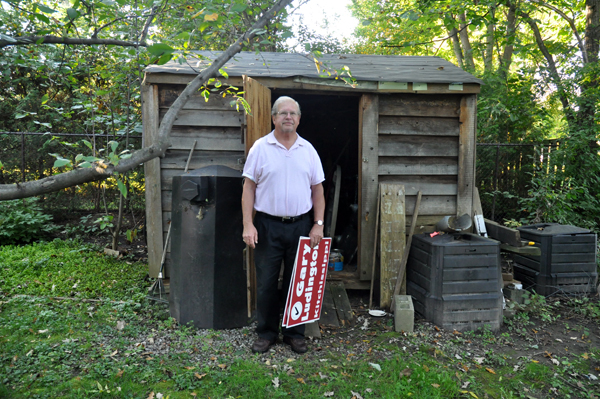
Q: I don’t know a lot about election signs, other than I see a lot of them during the run up to an election. What happens to all the election signs afterwards?
[dropcap color=”blue”]A: [/dropcap] Your question brought to mind a few interesting issues as it pertains to election signage. For example, many people don’t realize how many controls are in place in terms of election signs. They are limited in size, for starters, and they can’t be displayed on private property until 60 days prior to an election, and they can’t be placed on public property until 30 days before an election. You’ve probably noticed a flurry of sign-related activity, because that 30-day window just opened up.
Election signs must be removed within 48 hours following the election. The candidates go out and collect them afterwards, but many homeowners usually take them down themselves.
Your question uncovered a bit of confusion in regards to the recycling of election signs. Election signs are made out of two parts: a lightweight corrugated plastic called coroplast, and steel tines. Election signs aren’t mentioned in the City of Ottawa online “Waste Explorer” tool, which is usually a good way of finding out which household materials are recyclable and which ones are not. As it turns out, election signs are made out of #5 plastic and are recyclable, although they aren’t marked as such.
I asked each of the candidates about their election signs and here’s what each of them said.
Katherine Hobbs and I exchanged emails. Here’s what she wrote:
“Signs are the most expensive part of a campaign, and an important part of the campaign as they help build momentum for the election.
“At this point in time I couldn’t tell you exactly how many signs I have out there – the sign teams put out the first big crop of them on the first day they were allowed on private property. Subsequent to that we run around the neighbourhoods daily fulfilling the multiple requests we receive by phone, through the website, at the campaign office and orders I take at the doors.
“The support from the community has been just overwhelming and I feel very humbled by it,” says Hobbs.
She confirmed that volunteers pick up all the signs after the election, and that the signs are recyclable. Hobbs says she keeps hers, and that some people want them for souvenirs. They can also be used for art projects. [Ed: here’s a birdhouse you can make, for example.]
Jeff Leiper points out that if the signs don’t have a date on them they can be reused if a candidate chooses to run again, regardless of whether he or she wins or loses the election.
Leiper estimates his team will have about 500 signs out in the ward leading up to the election.
“I’m really surprised at the number of signs we have out there,” says Leiper. “Each one of those is an individual supporter, and right now you can get a really good feeling about how the race is going.”
Leiper also says the signs are conversation starters between neighbours, and as a result, drives a significant amount of traffic to his website.
“There are only so many things that will sway a voter… I think it’s fascinating to watch,” he says.
Regardless of the outcome, Leiper’s signs will probably wind up in his garage and will eventually be recycled.
KT readers may have already noticed a lack of election signage for candidate Ellen Lougheed on public or private property in the ward, but there’s a reason for that.
“I do not use plastic,” says Lougheed. “I don’t believe in putting plastic into the environment. It doesn’t decompose and it’s harmful to animals… so I use it as little as possible.”
Does the lack of visual reminders put her at a disadvantage? Lougheed doesn’t seem to think so. She’s been busy attending various events, talking to people and handing out (recyclable) campaign cards.
“I always try to live by example,” says Lougheed. “There’s no point having values if you don’t live by them, even when the contrary seems more beneficial to you. You can’t have values that just disappear.”
Michelle Reimer and I spoke on the phone. Reimer says election marketing and public relations play a huge role in getting elected, and signage is part of it.
“It’s hard for someone like me, and typically, those signs make a big difference.”
Although Michelle Reimer may not have as many signs out as some of the other candidates, she estimates she has around 300 in Kitchissippi ward.
“It’s public relations 101, it’s how you get out there, and this is what I’ve learned,” says Reimer. “If you’re good at leading, good at governing, shouldn’t you just win? It’s not the case.”
Larry Wasslen’s response to our question was a brief email. “At this time we do not have any signs up for our campaign,” he writes. “The fact is that we have a very tight budget and have only managed to print about three thousand leaflets. If we have any signs up between now and the election my campaign manager and I will ensure they are recovered.”
Andrea Tomkins
Editor
Is there an issue in your corner of Kitchissippi that’s been puzzling you? Perhaps there’s something you’ve always wanted to know but didn’t know who to ask. Send your burning questions (Kitchissippi-related of course) to us and we’ll help find the answer. Read what questions your neighbours have been asking right here.
